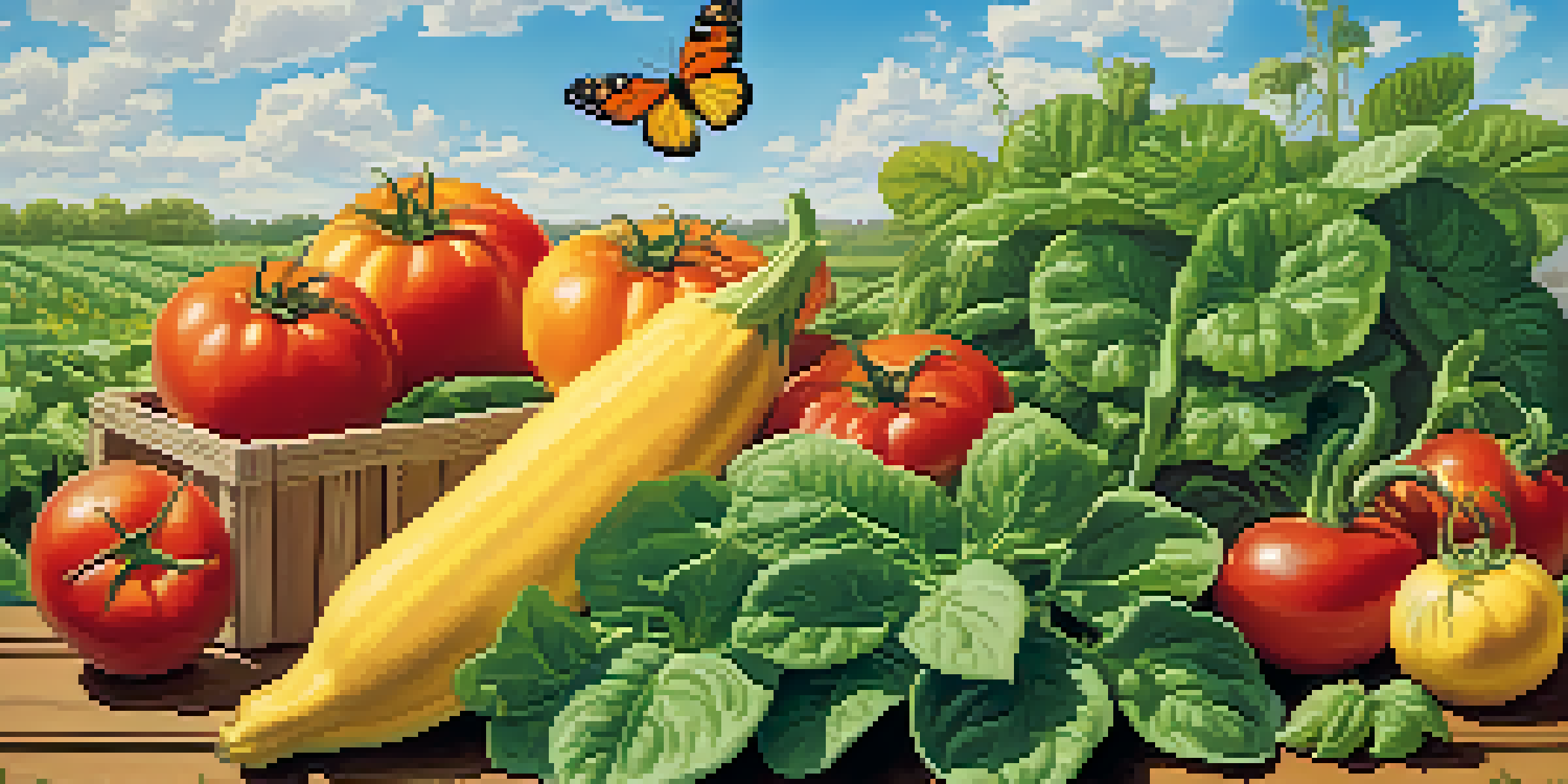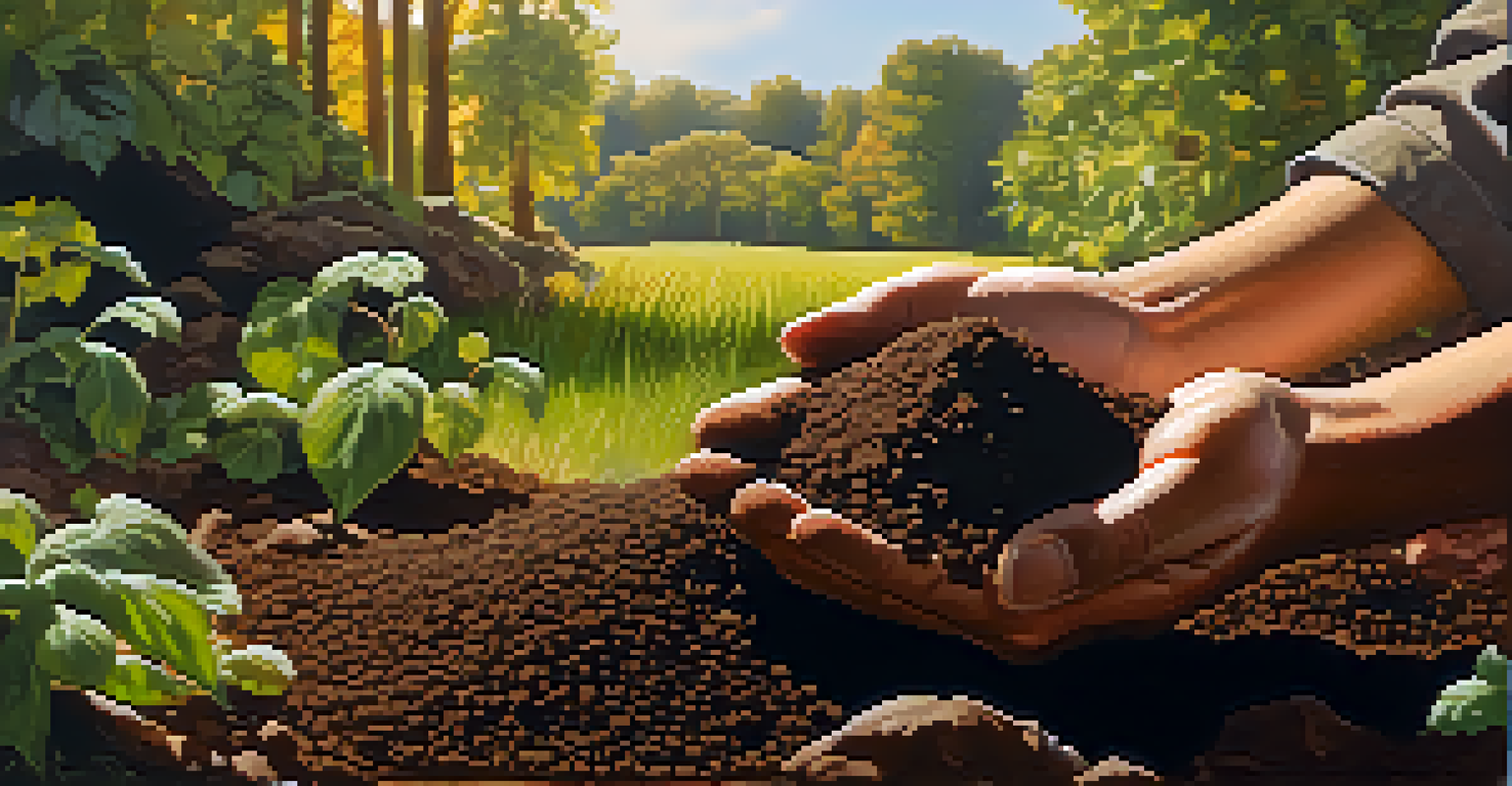Seasonal Edibles: Planning Your Garden for Year-round Harvests

Understanding Your Growing Zone for Year-round Success
Before you start planting, it’s crucial to know your growing zone. This zone indicates the climate conditions in your area, helping you choose the right plants that thrive throughout the seasons. The USDA Plant Hardiness Zone Map is a handy tool that divides regions based on average annual minimum temperatures, guiding you on what you can grow.
The best time to plant a tree was twenty years ago. The second best time is now.
For instance, if you live in a warmer zone, you might enjoy growing crops like tomatoes and peppers that need longer growing seasons. Conversely, cooler zones are perfect for hardy greens and root vegetables that can withstand frost. Understanding your zone not only maximizes your garden’s productivity but also minimizes the risk of planting unsuitable crops.
By aligning your planting choices with your local climate, you set yourself up for a successful, year-round garden. So, grab a map, find your zone, and start dreaming about all the delicious edibles you can cultivate!
Choosing the Right Seasonal Crops for Continuous Harvests
To achieve a year-round harvest, selecting a variety of crops for different seasons is essential. Cool-season crops like spinach and kale can be planted in early spring and again in fall, while warm-season crops like cucumbers and squash thrive in summer. This strategy allows you to enjoy fresh produce from your garden nearly all year long.

A great way to maximize your harvest is through succession planting. This means planting crops in intervals rather than all at once. For example, if you plant a row of carrots every two weeks, you'll have fresh carrots to harvest over a longer period, instead of a giant pile all at once.
Know Your Growing Zone
Understanding your growing zone helps you select the right plants that thrive in your local climate.
Don’t forget to consider perennial plants, such as asparagus and rhubarb, which come back year after year. By mixing annuals and perennials in your garden, you create a diverse ecosystem that provides continuous yields and enhances your gardening experience.
Creating a Planting Calendar to Stay Organized
A planting calendar is your best friend when planning a garden for year-round harvests. This simple tool outlines when to sow seeds, transplant seedlings, and harvest crops, ensuring that you make the most of your growing season. You can create a physical calendar or use a gardening app to keep track.
Gardening is the purest of human pleasures.
For example, if you plant peas in early spring, your calendar will remind you to sow them again in late summer for a fall harvest. Additionally, marking important dates helps you plan for crop rotations, which is essential for maintaining soil health and reducing pests.
By keeping a planting calendar, not only do you streamline your gardening tasks, but you also cultivate a deeper connection with your garden. This organized approach makes the process enjoyable and less overwhelming, allowing you to focus on nurturing your plants.
Soil Preparation: The Foundation for Healthy Plants
Healthy soil is the cornerstone of a successful garden. Before planting, take the time to assess and prepare your soil. Testing its pH and nutrient levels can give you insights into what amendments may be necessary to create an optimal growing environment.
Adding organic matter like compost or well-rotted manure enriches your soil, providing vital nutrients and improving its structure. This not only promotes healthy root development but also enhances water retention, making your plants more resilient during dry spells.
Plant for Year-round Harvests
Choosing a variety of seasonal crops and utilizing succession planting ensures continuous yields throughout the year.
Additionally, consider practicing crop rotation to prevent nutrient depletion and minimize pest issues. By changing the location of your crops each year, you maintain soil health and encourage a thriving garden ecosystem.
Watering Techniques for Efficient Garden Management
Watering your garden effectively can significantly impact your harvest. Understanding the needs of different plants is essential, as some thrive with consistent moisture while others prefer drier conditions. A good rule of thumb is to water deeply but less frequently, encouraging deep root growth.
Drip irrigation systems can be a game-changer for maintaining consistent moisture levels without wasting water. These systems deliver water directly to the plant roots, reducing evaporation and ensuring that your plants receive the hydration they need.
Moreover, mulching around your plants can help retain soil moisture and suppress weeds, creating a healthier growing environment. By mastering watering techniques, you set your garden up for success, leading to bountiful harvests.
Companion Planting: Boosting Growth Naturally
Companion planting is a fantastic strategy to enhance your garden's productivity and health. Certain plants, when grown together, can benefit each other by repelling pests, attracting beneficial insects, or improving soil quality. For example, planting basil next to tomatoes is known to enhance their flavor and repel harmful insects.
This natural approach reduces the need for chemical pesticides, creating a healthier garden ecosystem. Additionally, companion planting can help maximize space, allowing you to grow more in a smaller area. By thoughtfully pairing your plants, you create a thriving garden community.
Effective Soil and Water Management
Preparing healthy soil and mastering watering techniques are essential for nurturing robust plants and maximizing harvests.
Experimenting with different combinations can be fun, and you might discover surprising partners that work well together. Observing how these relationships unfold adds an exciting layer to your gardening journey.
Harvesting and Storing Your Crops for Longevity
Once your hard work pays off and the time comes to harvest, knowing how to do it properly is key. Harvesting your crops at the right time ensures peak flavor and quality. For instance, vegetables like zucchini should be picked while still young for the best taste, while root vegetables can be harvested at maturity.
After harvesting, proper storage is crucial for prolonging the life of your edibles. Some crops, like tomatoes, are best stored at room temperature, while others, like carrots, thrive in cool, moist conditions. Understanding the specific storage needs of each crop can help maintain their freshness for longer.

Additionally, consider preserving excess produce through freezing, canning, or drying. This way, you can enjoy the fruits of your labor even when they're out of season, keeping your garden's bounty alive throughout the year.